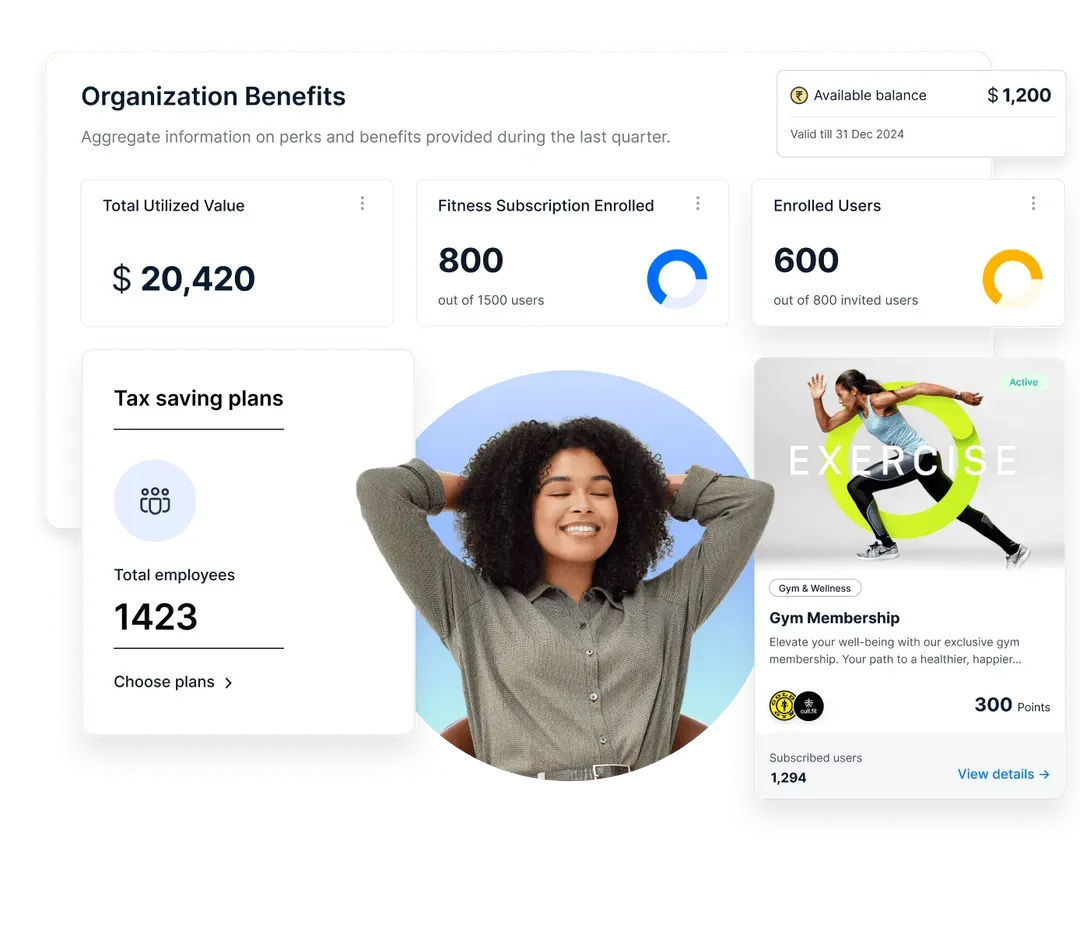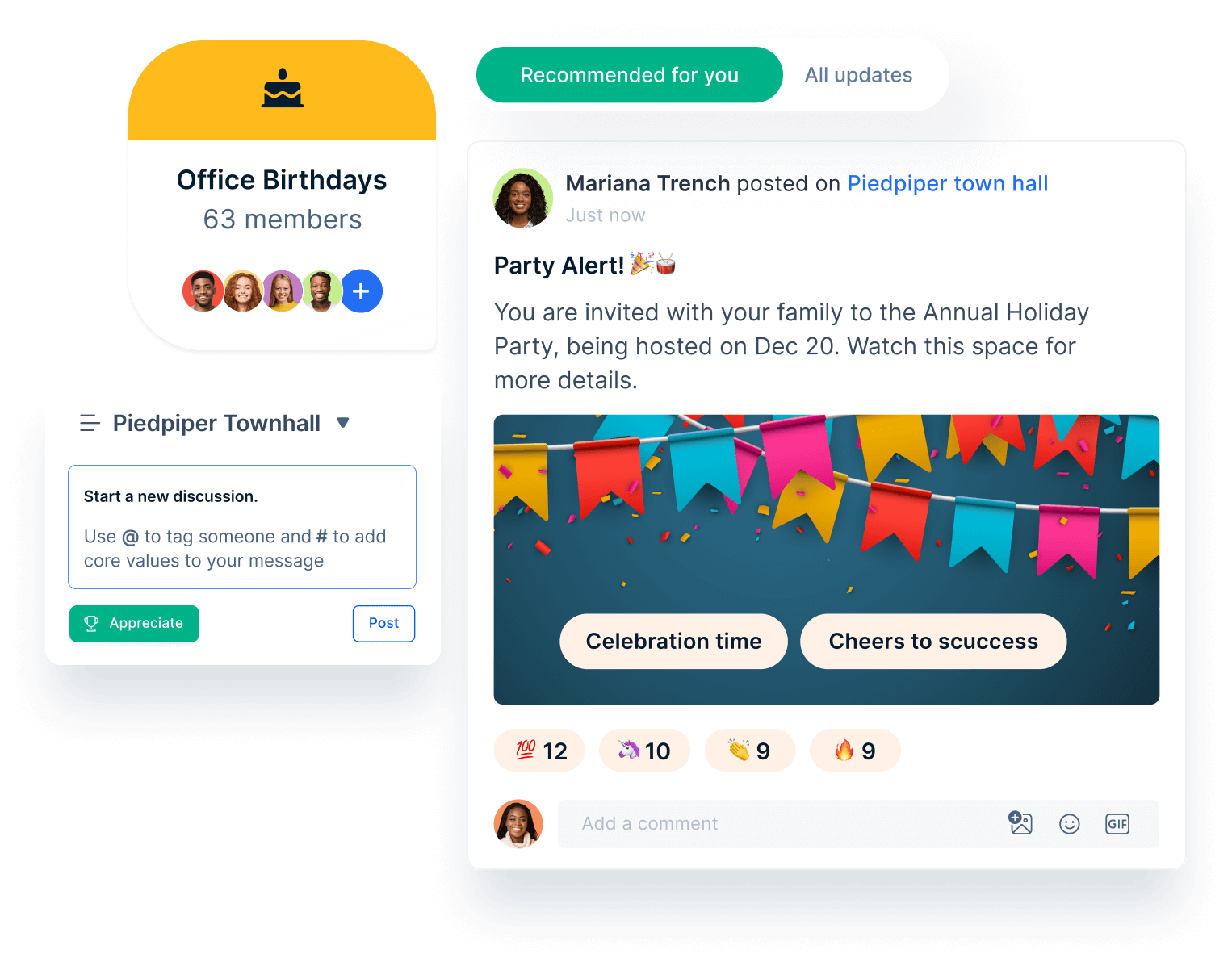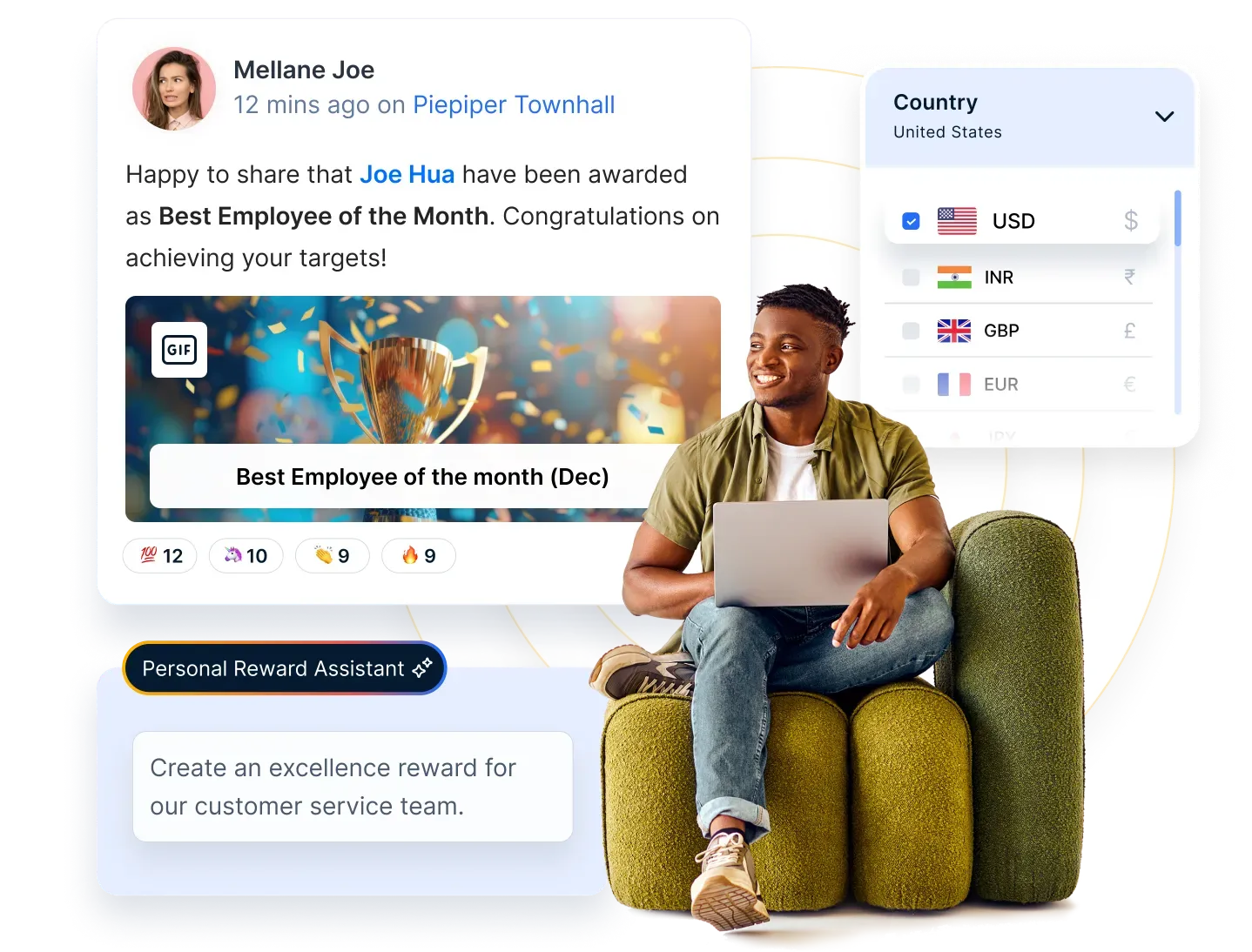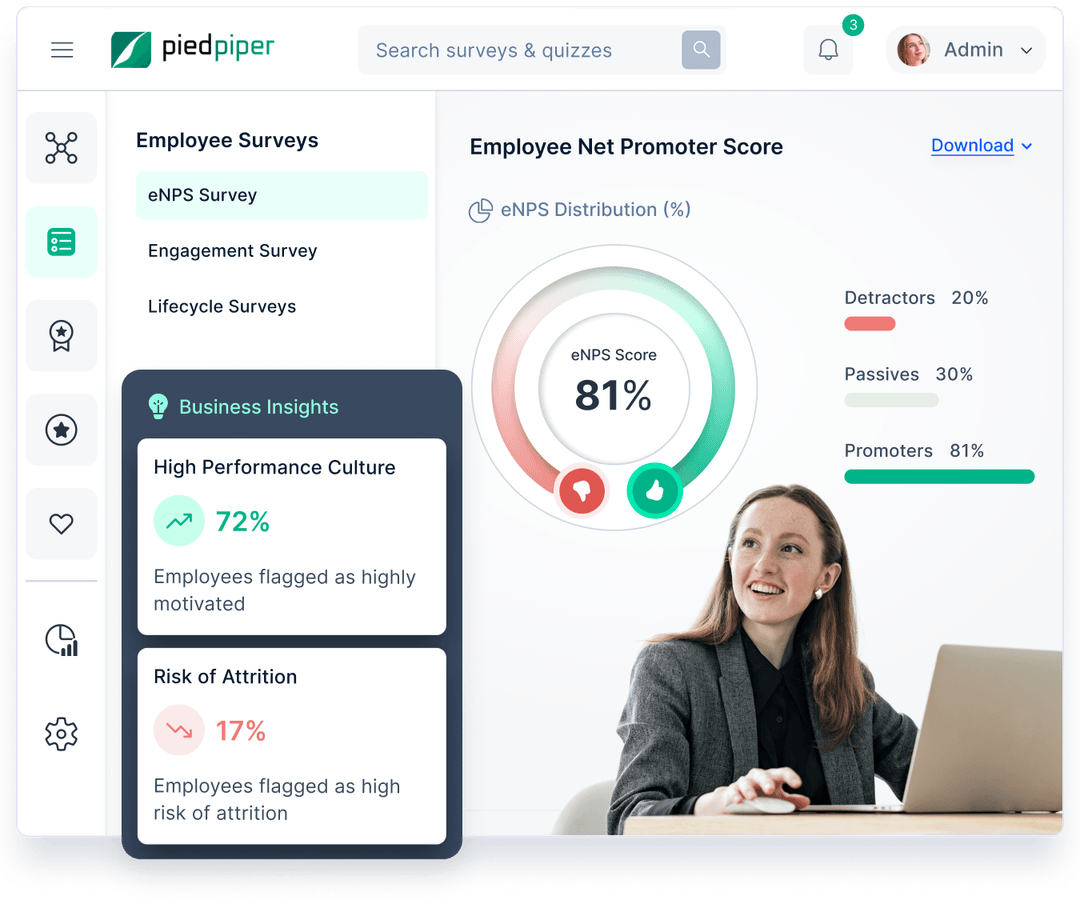Program Bantuan Karyawan: Definisi, Manfaat, dan Jenisnya
An employee assistance program helps reduce stress, improve productivity, and support well-being. Learn why your workplace needs one and how to set it up effectively.
Di halaman ini
- Apa yang dimaksud dengan program bantuan karyawan?
- Mengapa Anda memerlukan program bantuan karyawan?
- Manfaat program bantuan karyawan
- Jenis-jenis program bantuan karyawan
- Biaya program bantuan karyawan
- Bagaimana cara menyiapkan program bantuan karyawan?
- How Empuls supports EAP goals
- ✅ Mental & emotional wellness support
- ✅ Culture of openness & belonging
- ✅ Recognition & motivation
- ✅ Continuous listening & feedback
- Undang-undang program bantuan karyawan
- Kunci keberhasilan program
- Daftar penyedia program bantuan karyawan
- Comprehensive employee wellness program framework
- Kesimpulan
Pelanggan tidak akan pernah mencintai sebuah perusahaan sebelum karyawannya mencintainya terlebih dahulu. -Simon Sinek
"Sam tidak hadir hari ini!
"Tapi kenapa?
"Dia sakit, terdengar agak stres juga.
Stres tidak hanya merugikan karyawan tetapi juga perusahaan. Studi ini juga mengungkapkan bahwa stres menyebabkan kekerasan, peningkatan biaya asuransi, penurunan produktivitas, dan bahkan kecelakaan dalam beberapa kasus.
Namun, program bantuan yang sederhana dapat meringankan banyak hal bagi karyawan dan pemberi kerja.
Apa yang dimaksud dengan program bantuan karyawan?
Asuransi kesehatan karyawan tetap tidak tersentuh, yang berarti bahwa program ini tidak membebani karyawan dengan biaya apa pun. Penyedia program bantuan karyawan memiliki jaringan profesional berpengalaman yang membantu dalam hal kesehatan mental, penyalahgunaan zat, dan banyak lagi.
Anda bisa mengontrak dengan penyedia EAP dengan berbagai cara, namun itu nanti saja. Mari kita pahami mengapa Anda membutuhkannya sejak awal.
Mengapa Anda memerlukan program bantuan karyawan?
Bensinger, DuPont & Associates mensurvei 24.000 karyawan dan menemukan bahwa masalah pribadi berdampak pada kinerja karyawan.
↠ Hampir 16 persen karyawan mengakui bahwa masalah pribadi menyebabkan ketidakhadiran.
↠ Hampir 50 persen dari mereka melaporkan kurangnya fokus karena masalah yang sama.
Namun, penggantian karyawan bukanlah solusi. Penghasilan tahunan perusahaan dapat berkurang hingga 50% jika melakukan hal tersebut.
Jadi, apa yang harus Anda lakukan sebagai pemberi kerja?
Solusinya adalah EAP.
Selain meningkatkan produktivitas, EAP juga dapat:
- ✅ Mengurangi ketidakhadiran
- ✅ Menurunkan perselisihan tenaga kerja
- ✅ Mengurangi kecelakaan mobil
- ✅ Biaya asuransi yang lebih rendah
- ✅ Meningkatkan retensi karyawan
- ✅ Meningkatkan keterlibatan karyawan
Berikut ini adalah hal lain yang tercakup di dalamnya.
Program bantuan karyawan telah berkembang dalam beberapa tahun terakhir dan sekarang lebih banyak membantu karyawan daripada penyalahgunaan narkoba. Konseling EAP tidak lagi terbatas pada karyawan dan telah tersedia bagi keluarga mereka.
Manfaat program bantuan karyawan
Berikut adalah manfaat dari penyedia program bantuan karyawan:
- Konflik di tempat kerja: Cara menghadapi karyawan dan manajer yang licik.
- Alkohol atau penyalahgunaan obat-obatan terlarang: Berurusan dengan kecanduan alkohol yang dialami rekan kerja atau anggota keluarga.
- Masalah kesehatan mental: Bantuan untuk depresi, iri hati atau manajemen kemarahan, harga diri yang rendah, dll.
- Masalah keluarga atau pribadi: Saran-saran untuk menghadapi kekerasan dalam rumah tangga, perpisahan, dan bahkan masalah pengasuhan anak.
- Masalah kesehatan dan pengasuhan: Mengelola masalah disabilitas/medis, dan panduan untuk membantu orang yang sakit atau lanjut usia.
- Konseling keuangan: Manajemen pengeluaran kartu kredit atau saran untuk menghindari kebangkrutan.
- Nasihat hukum dan keluarga: Hak asuh anak, konseling pernikahan, atau masalah perceraian.
- Bantuan kesedihan: Kesedihan karena kehilangan orang yang dicintai atau mengalami kecelakaan di tempat kerja.
Jenis-jenis program bantuan karyawan
Perusahaan dapat membuat kontrak dengan EAP dengan berbagai cara. Beberapa jenis program EAP yang umum tercantum di bawah ini.
1. Program internal
- Program-program ini memungkinkan pemberi kerja untuk mempekerjakan konselor internal.
- Perusahaan besar dengan karyawan yang terkonsentrasi menggunakan program internal, dan ketersediaan di tempat membuat konseling EAP menjadi mudah.
Namun, program internal tidak dihargai oleh karyawan seperti halnya program eksternal. Alasannya adalah karena karyawan ragu-ragu untuk menggunakan EAP karena masalah privasi.
2. Program eksternal
- Ini adalah program berbasis kontrak reguler antara pemberi kerja dan penyedia EAP.
- Program ini memungkinkan karyawan untuk terhubung menggunakan nomor telepon bebas pulsa.
- Spesialis EAP akan memverifikasi detailnya dan menyarankan sumber daya terbaik sesuai dengan lokasi geografis karyawan.
3. Program campuran
- Program-program ini cocok untuk perusahaan dengan konsentrasi karyawan yang besar dan kecil di lokasi yang berbeda.
- Program ini memungkinkan karyawan untuk menggunakan layanan yang mereka sukai, baik secara langsung maupun melalui nomor bebas pulsa.
Biaya program bantuan karyawan
Perusahaan dapat menyesuaikan layanan EAP sesuai dengan kebutuhan mereka. Dan kustomisasi memiliki peran besar dalam biaya yang terlibat. Perusahaan kecil dengan lebih banyak manfaat cenderung lebih mahal.
Umumnya, program EAP dapat dikenakan biaya serendah $10 per karyawan, tergantung pada layanan yang ditawarkan, lokasi, dan kekuatan perusahaan.
Berikut ini adalah model pengiriman yang bervariasi sesuai dengan biaya Anda.
1. 1. Kontrak dengan biaya tetap
Model ini mencakup biaya per karyawan terlepas dari berapa banyak karyawan yang menggunakan layanannya. Penyedia program bantuan karyawan juga menawarkan penilaian, konseling, dan program pendidikan dengan model ini.
2. Kontrak biaya untuk layanan
Penyedia EAP dan pemberi kerja membuat kontrak secara langsung, dan pemberi kerja membayar ketika karyawan menggunakan layanan.
3. Konsorsium
Beberapa perusahaan kecil bergabung bersama dan membuat kontrak dengan penyedia EAP. Model ini membantu mengurangi biaya per karyawan.
Bagaimana cara menyiapkan program bantuan karyawan?
Menyiapkan program bantuan karyawan bertujuan untuk meningkatkan keterlibatan karyawan, yang pada akhirnya akan meningkatkan produktivitas di sebuah agensi. Namun, hasilnya bergantung pada faktor-faktor yang Anda pertimbangkan (tercantum di bawah ini) saat menyiapkan EAP.
1. Teliti layanan yang dibutuhkan karyawan Anda
Meneliti kebutuhan akan membantu Anda mengoptimalkan biaya tanpa kehilangan efektivitas EAP. Banyak perusahaan menggunakan penilaian dan survei internal dan mengumpulkan data untuk mengidentifikasi kebutuhan karyawan mereka.
Sebagai contoh, Anda dapat mengidentifikasi rentang usia rata-rata tenaga kerja Anda dan memilih layanan yang mereka butuhkan dari data yang terkumpul. Karyawan yang sudah menikah akan lebih cenderung menggunakan layanan konseling pernikahan, dan orang tua baru akan lebih memilih layanan penitipan anak.
2. Meneliti penyedia EAP
Setelah mengidentifikasi layanan yang dibutuhkan, pilihlah penyedia program bantuan karyawan yang akan membantu Anda mencapai kesempurnaan. Tanyakan kepada kompetitor Anda (yang memiliki tenaga kerja yang sama) dan sertakan rekomendasi mereka untuk membuat daftar penyedia program bantuan karyawan.
Sekarang, saring opsi yang telah Anda kumpulkan, dan pilih EAP yang memenuhi syarat berdasarkan poin-poin di bawah ini.
- Pertimbangkan lama layanan, jumlah referensi, dan basis klien mereka; semakin banyak, semakin baik.
- ✅ Apakah mereka menyediakan layanan yang Anda butuhkan secara khusus?
- ✅ Apakah mereka menyediakan layanan di lokasi, di luar lokasi, atau keduanya? Dan dapatkah mereka menangani karyawan di lokasi yang berbeda?
- ✅ Apakah layanan akan tersedia 24/7?
- ✅ Apakah jaringan EAP memiliki kredensial terkait masalah hukum kesehatan yang mereka sediakan?
- ✅ Berapa banyak sesi gratis yang akan tersedia sebelum karyawan harus membayar?
- ✅ Pertimbangkan waktu respons EAP ketika karyawan menghubungi mereka.
- ✅ Apa yang dikatakan oleh testimoni dan ulasan EAP tentang mereka?
Jangan lupa untuk memeriksa daftar penyedia EAP yang telah kami susun untuk Anda di bagian akhir.
3. Mempromosikan program di antara para karyawan
Karyawan mungkin tidak mulai menggunakan EAP karena dua alasan, yaitu kerahasiaan dan ketidaktahuan. Julie Krause, Manajer Manfaat - U.S. Wellness di Microsoft, pernah menyebutkan bahwa mereka meluncurkan kampanye (It's OK Not to Be OK) pada bulan Mei 2018.
Langkah ini membuka percakapan tentang kesehatan mental dan mendorong karyawan untuk menggunakan sumber daya EAP.
Inilah yang dapat Anda lakukan:
- ✅ Tempelkan pamflet di buletin dan dinding, di mana karyawan dapat sering melihatnya.
- ✅ Beritahukan kepada karyawan Anda bahwa layanan ini bersifat rahasia dan gratis. Anda bahkan bisa menghubungi penyedia EAP Anda untuk menjelaskan layanan ini melalui lokakarya.
Penyiapan EAP juga melibatkan beberapa masalah hukum, dan pertimbangannya bisa menghemat banyak biaya.
How Empuls supports EAP goals
While Empuls doesn’t directly offer traditional EAP counseling, it acts as a powerful complement by holistically addressing the well-being, morale, and support structure that EAPs aim to foster:
✅ Mental & emotional wellness support

Empuls provides perks and benefits that alleviate stress:
- Fringe Benefits via Lifestyle Spending Accounts (LSAs) for health, wellness, learning, caregiving.
- Flexible Perks like fitness allowances, mental wellness resources, and remote work benefits.
- Early Access to Earned Wages, reducing financial anxiety.
✅ Culture of openness & belonging

Empuls’ Social Intranet boosts transparency and internal communication:
- Townhalls, community groups, wishboards, and digital celebrations nurture psychological safety.
- Employees feel more connected and aligned to the company’s mission, which directly counters isolation—a common stressor.
✅ Recognition & motivation

Empuls automates in-the-moment recognition and celebration of achievements, which:
- Boosts morale
- Reinforces positive behavior
- Encourages peer support and appreciation
This builds a resilient culture that supports mental well-being.
✅ Continuous listening & feedback

EAPs rely on understanding employee issues early—Empuls helps do this at scale:
- eNPS, pulse, and lifecycle surveys uncover areas of stress and disengagement.
- AI-powered analytics help HR take timely action.
Undang-undang program bantuan karyawan
Karena program bantuan karyawan bekerja sama dengan karyawan, risiko terkait masalah hukum selalu terlibat.
Dalam kasus Hobson v. St Luke's Hospital and Health Network, seorang paramedis menggugat majikannya dengan menyatakan bahwa pekerjaannya diputuskan karena majikannya melakukan diskriminasi terhadap penyakit mental dan jenis kelamin laki-lakinya.
Sementara itu, pemutusan hubungan kerja penggugat terjadi karena ia melakukan pelecehan seksual terhadap rekan kerja perawat wanitanya. Jadi, inilah yang perlu Anda waspadai.
1. Kerahasiaan
Biasanya, EAP tidak membagikan informasi rahasia karyawan tanpa persetujuan mereka. Pengecualian terjadi ketika pemberi kerja menerima laporan akhir tentang layanan yang diberikan untuk masalah tersebut.
Pemberi kerja tidak boleh mempublikasikan informasi tersebut karena pelanggaran kerahasiaan dapat menimbulkan ganti rugi yang besar. Tindakan ini juga dapat merugikan reputasi karyawan yang dapat menghancurkan masa depannya.
2. Rujukan wajib
Rujukan EAP harus dilakukan dengan persetujuan karyawan, dengan kata lain, harus bersifat sukarela. Dan ketika pemberi kerja mewajibkan rujukan karena penyakit karyawan, ini disebut rujukan wajib.
Dalam hal ini,
- Pemberi kerja harus mencatat penurunan kinerja karyawan di masa lalu untuk mewajibkan karyawan tersebut dirujuk ke penyedia EAP.
- Pemberi kerja tidak boleh mengancam pemutusan hubungan kerja terhadap karyawan untuk melakukan rujukan. Tindakan ini dapat menimbulkan tindakan hukum yang mengklaim adanya diskriminasi oleh pemberi kerja atas penyakit mental karyawan.
Kunci keberhasilan program
Keberhasilan program EAP dibagi antara karyawan dan perusahaan. Selain itu, faktor-faktor yang mendukung keberhasilan tercantum di bawah ini.
1. Faktor-faktor yang diatur oleh manajemen
Keberhasilan berbicara dengan dua faktor yang ditangani oleh manajemen.
- Kesadaran akan program adalah kunci partisipasi karyawan, dan partisipasi aktif adalah langkah pertama menuju keberhasilan program.
- Karyawan ragu untuk berpartisipasi karena masalah kerahasiaan. Anda dapat mengatasi masalah ini dalam lokakarya yang diadakan oleh para profesional EAP.
2. Faktor-faktor berbasis KPI
Partisipasi karyawan yang aktif dan ROI yang lebih tinggi mengindikasikan lebih banyak keberhasilan. ROI program ini dapat diukur dengan indikator kinerja utama yang tercantum di bawah ini.
- Peningkatan produktivitas
- Mengurangi ketidakhadiran
- Berkurangnya kecelakaan di Tempat Kerja
Inilah yang perlu Anda lakukan:
- Buat catatan karyawan yang menggunakan program bantuan karyawan.
- Melacak keterlibatan karyawan dengan mengurangi ketidakhadiran, kecelakaan di tempat kerja, produktivitas karyawan, dll., dalam waktu tertentu.
- Catat perbedaannya dan susunlah hasilnya di akhir. Anda bahkan bisa menunjuk seorang manajer internal untuk melakukannya.
Daftar penyedia program bantuan karyawan
Di sini, kami telah mendaftarkan beberapa penyedia EAP yang memiliki ulasan tertinggi (terdaftar lebih dari sepuluh) dan peringkat di atas 3,5:
- Go365
- Optum
- Gilsbar
- Virgin Pulse, Inc.
- Tenda Kesehatan
- Penasihat Kesehatan
- Wellworks Untuk Anda
- CuraLinc Healthcare
Comprehensive employee wellness program framework
Blend Empuls with an external EAP provider to offer proactive and reactive wellness support.
Step 1: Understand employee needs
Use Empuls surveys and analytics to uncover the real issues impacting your workforce.
Step 2: Choose an EAP provider
Select a certified provider that complements Empuls with confidential, expert-led support.
Step 3: Integrate Empuls with the EAP experience
Bridge data and action by mapping Empuls tools to EAP goals for seamless support.
Step 4: Communicate and destigmatize EAP access
Leverage Empuls intranet and campaigns to normalize seeking help and increase awareness.
Step 5: Promote holistic perks with Empuls
Offer meaningful financial, emotional, and lifestyle perks that reduce stress and build trust.
Step 6: Measure, iterate, and report
Track adoption, effectiveness, and ROI across both platforms to improve outcomes over time.
Recognize personal and professional milestones with Empuls to elevate morale and belonging. Schedule a call now to learn how Empuls can fit with your services seamlessly.
Kesimpulan
Pada akhirnya, Anda tidak dapat mengetahui bahwa karyawan Anda sedang stres hingga kinerja mereka tercermin. Mendorong karyawan Anda untuk mendiskusikan masalah mereka adalah tugas yang paling menantang bagi seorang pemberi kerja.
That's why choosing a suitable EAP matters. Select EAP testimonials and reviews as deciding factors because they'll help the firm's drivers.













